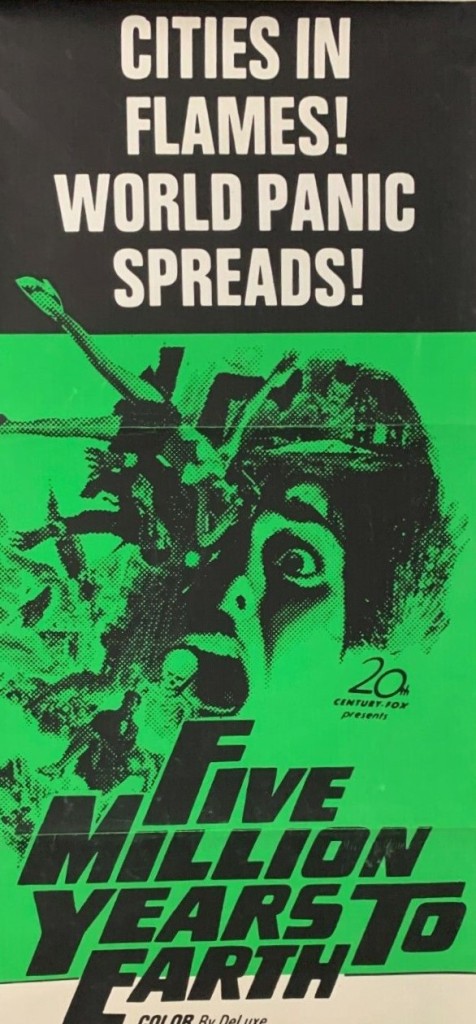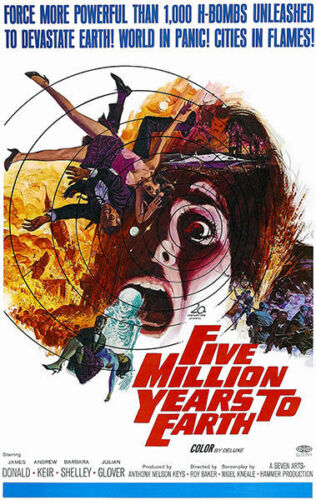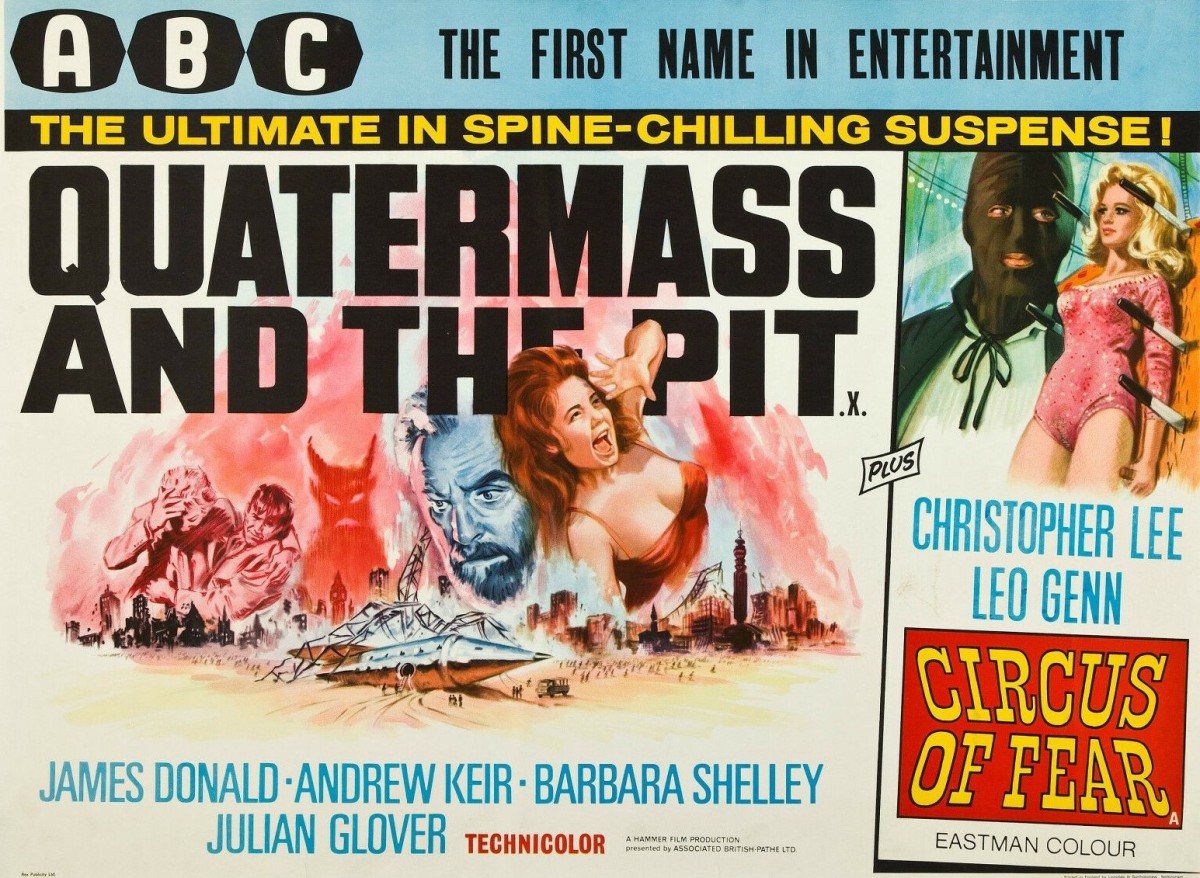Although it is fairly common these days for Hollywood to raid television for ideas for movies, it was rare back in the 1950s except for a select group of dramas in the early stages of live television in the U.S., and certainly you would not point to the august instutition of BBC as a source of supply. Author Nigel Kneale had kicked off his screen franchise with The Quatermass Experiment (1953) on television followed by a movie version two years later starring Brian Donlevy, repeating the format with Quatermass II – the first digitalizing of a sequel – on television in 1955 and movie (Roman numerals replaced by ordinary ones) in 1957.
Quatermass and the Pit also originated on BBC television in 1958-1959 so comparatively speaking took an inordinately long time to hit the big screen. British studio Hammer had greenlit the first two Quatermass films, both directed by Val Guest, and purchased the rights to the third, intending to utilize the same team – Kneale, Guest, Donlevy – for a film to go into production in 1963, but Hammer’s Hollywood co-producers Columbia disliked the script. Even a revised lower-budgeted screenplay failed to meet Columbia’s approval and the project went on hold until Hammer struck up a U.S. distribution deal with Seven Arts and Twentieth Century Fox.

The script for the film, although condensed from the television series, largely stuck to the original story, one subplot involved a journalist being deleted, and minor alterations to the climax. None of the movie’s stars had ever headlined a picture so there was a reasonable argument that top billing should fall to James Donald since he had been in the widest-seen movies, namely Bridge on the River Kwai (1957) and The Great Escape (1963) whereas Andrew Keir and Barbara Shelley (both had appeared in Dracula: Prince of Darkness in 1966) were best known for supporting roles in Hammer pictures, never highly budgeted nor monstrous box office hits.
Kneale had objected to Donlevy’s interpretation of the title role and wanted a change. Andre Morell, who had played the part in the small-screen version, did not want to reprise the role. Director Roy Ward Baker later denied he had lobbied for Kenneth More considering the star “too nice” for the part, which would appear an odd assumption given the tough roles he had played in war pictures. Antipathy to More might have had a lot to do with the fact that the actor, a huge British star in the 1950s, was persona non grata after falling out with the head of the Odeon chain of cinemas, thus automatically limiting a movie’s distribution prospects.
Keir described the filming as “seven-and-a-half-weeks…of pure hell” which came as a surprise to the director. “I had no idea,” recalled Baker, “I was presenting him as the star. His performance was absolutely right in every detail.” In fact, Baker had such confidence in the story – “taut, exciting…excellent narrative drive…that all one need to do was cast it and shoot it.”

Ward had fallen on lean times as a movie director after the box office failure of comedy Two Left Feet (1965). He wasn’t first choice but Val Guest was tied up with Casino Royale (1967) and his experience of special effects of films like A Night to Remember (1958) provided him with the credentials for the job. He had been working more in television than cinema in the past five years so this offered a chance of movie redemption.
On a budget of just £275,000, the picture was shot at MGM Borehamwood studios, whose backlot was used to replicate the Underground station. Among the special effects by Les Bowie was the Martian massacre which utilized a mixture of lie locusts and puppets while the destruction of London was achieved through model work.
The same year as the Quatermass and the Pit movie appeared there was a second outing, this time as a TV movie starring Garry MacDonald, for The Quatermass Experiment, and the whole shebang was completed by aptly-titled The Quatermass Conclusion (1979), a big screen venture starring John Mills, that was an edited version of a four-part ITV television production known as Quatermass. That is, until The Quatermass Experiment was re-imagined as another TV film starring Jason Flemyng and Adrian Dunbar (as guess what, a detective) in 2005.

Wow ! That ABC poster has a choice selection of images that are not in this film….
LikeLiked by 1 person
There you go again, those damn marketeers will do anything to snare the unwary public. Maybe they saw a longer version.
LikeLiked by 1 person
Or one directed by Cecil B Demille, that spaceship looks HUGE!
LikeLiked by 1 person
What a job he would have done if he had tangled with sci-fi.
LikeLiked by 1 person
Or CGI!
LikeLiked by 1 person
That would have been something. The Red Sea would never have been the same gain. He might even have changed the colour.
LikeLike